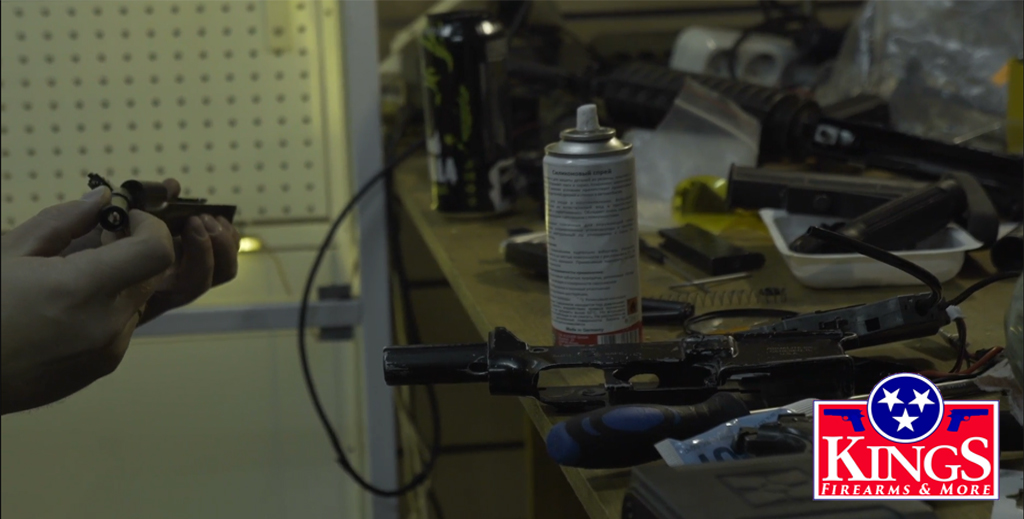Inflorescence. In tomato, fruit is a capsule C. Seeds of orchids have oil-rich endosperm D. Placentation in primrose is basal View Text Solution Flowers fertile or sterile. Simple flowers can appear as well as simple cymes and branched cymes. Indefinite or Racemose inflorescence, II. 5. Definition of scorpioid cyme. Morphology of Flowering Plants is the fifth chapter in the unit "Organisation in Plants and Animals" of class XI or class 11th Biology NCERT. Flower of tulip is a modified shoot B. Learn vocabulary, terms, and more with flashcards, games, and other study tools. Based on inflorescence architectures, three major types of inflorescences are defined: raceme, cyme and panicle (Prusinkiewicz et al., 2007; Fig. Unlike the examples of the . 340. Example: terminal in Trillium grandiflrum and axillary in Hibiscus. - In Verticillaster inflorescence at each node of the stem, two axillary opposite cymose inflorescence develops on either side. The main axis continues into the axis of inflorescence. Cyme: the growing tip becomes a floret before more arise from axillary buds. At anthesis they present the flowers in ways that allow for the transfer of pollen and optimization of the plant's reproductive success. It may be terminal or axillary in position. Review of Nardostachys grandiflora: an important endangered medicinal and aromatic plant of western Himalaya . A group of flower is called inflorescence. The inflorescence is some form of cyme, and the flowers are usually regular. The perianth is biseriate and dichlamydeous. Furthermore, what is mixed inflorescence? Petunia hybrida) or ebracteate. Background and aims: In the Lamiales, indeterminate thyrses (made up of axillary cymes) represent a significant inflorescence type. An inflorescence is actually a closely branching in most plants the flowers are borne in groups but in some, they occur singly and are called Solitary. Example: terminal in Trillium grandiflorum and axillary in . A. travancoricum having racemiform inflorescence. AP1 is uniformly expressed in the initially undivided meristem, with expression maintained in the organ primordia derived from the bud complex. 1. Define cyme. However, what we've been taught solitary flower as a subtype of cymose or definite inflorescence. The arrangement axis is termed an inflorescence. . Flowers bisexual; inflorescence an axillary cyme; fresh leaves and stems lacking white latex; fruit simple, a 1-seeded nut; main leaf veins splitting several times towards the leaf margin and leading into the teeth without rejoining and forming a marginal vein; basal veins 5, palmate, all joining together at the summit of the petiole; main . the two lateral bracts at the base of the flower give rise to branches ending in a . I. G. Don. I 2 activities further enrich the complexity of inflorescence architectures by reiterating I 1, leading to compound inflorescences, which evolved from simple The inflorescence axis ends in a flower. Flowers subzygomorphic. Simple cyme (solitary): Determinate inflorescence consists of a single flower. The modifications can involve the length and the nature of the internodes and the phyllotaxis, as well as variations in the proportions, compressions . Corolla's are campanulate and 4-lobed (lobes are reflexed). n. . Hypanthium broader than long. eg. May appear corymb-like. The cyme inflorescence is the main type of cymose. Central axis stops growing and ends in a flower, further growth is by means of axillary buds. The flowers are bisexual, actinomorphic, hypogynous. Flowers actinomorphic. Simple Cyme (Solitary): Determinate inflorescence consists of a single flower. The peduncle is formed by the fusion of bases of axillary branches and the main axis. In a determinate inflorescence, the oldest flower is located in the middle of the cluster, at the end of the main axis, and the peripheral, younger flowers grow from axillary buds. The peduncle is formed by the fusion of bases of axillary branches and the main axis. The tomato flower occurs in the three organizational patterns drawn below. Multiparous or polychasial cyme: This is a cymose inflorescence in which the main axis is terminated by a flower and produces many lateral branches (daughter axis), each terminating into a flower. - In cymose inflorescence, the flowers are present at the Alex of the flower axis. The solitary flower may be Terminal, when it is borne at the tip' of the main stern or of its branch as in Poppy, or . 2. Inflorescences with oldest flower at the end of the main axis are called "determinate" (i.e. Solitary, axillary cyme (eg. It is a group of three flowers. The bract axillary meristem originates the second-order inflorescence axis meristem, which produces two bracteoles, subsequently developing into a floral meristem. The pollen-producing male reproductive organ of a flower, consisting of an anther and filament. In an angiosperm, the terminal pollen sac of a stamen, where pollen grains containing sperm-producing male gametophytes form. One to four flowers can appear in an axil, termed an axillary cyme inflorescence. Inflorescence an axillary cyme. An axillary bud occurs in the angles between a stem and a leaf petiole. Flowers regular, or sometimes irregular; calyx (4-) 5 (-10)- toothed; corolla rotate, 5 (-6)-lobed.Stamens 5, exserted; anthers united over thestyle,dehiscingby2apicalpores.Fruita2-celledberry;seedsnumerous,reniform. An inflorescence is a group or cluster of flowers arranged on a stem that is composed of a main branch or a complicated arrangement of branches. terminal bud continues to produce new flowers). I. SOLITARY INFLORESCENCES (terminal and axillary) Some inflorescences are one-flowered, in which case the pedicel may (oddly, it seems) also be regarded to be a peduncle. All the taxa possess branched inflorescence with C. heyneanum being an exception by having simple cyme inflorescence. Such flowers are referred to as terminal solitary cyme and axillary solitary cyme respectively. Background and aims: In the Lamiales, indeterminate thyrses (made up of axillary cymes) represent a significant inflorescence type. It may be terminal or axillary. The special nature of the gesneriaceous inflorescence has been recognized only recently. • Identify the type of raceme/cyme giving reasons. AP1 is uniformly expressed in the initially undivided meristem, with expression maintained in the organ primordia derived from the bud complex. Flowers bloom in the late fall, inflorescence is a short, axillary cyme. Types of inflorescence in plants. Note: Inflorescences with youngest flower at the end of the main axis (rachis) are called "indeterminate" (i.e. . i Inflorescence- Simple raceme, axillary cyme or solitary ii Flower- Bracteate, pedicellate, subsessile, bisexual, mostly zygomorphic, sometimes regular, pentamerous, hypogynous or slightly perigynous a Calyx- Sepals 5, gamosepalous, imbricate aestivation * 2003 , S. M. Reddy, S. J. Chary, University Botany 2: Gymnosperms, Plant Anatomy, Genetics, Ecology , page 190, The plant bears small groups of two or three yellowish coloured flowers on an axillary cyme . These axillary units may . Dyschoriste thunbergiiflora is a fast-growing, much-branched, rounded shrub up to 1.7 m high, with a spread of 1.5 m. Leaves are mostly elliptic and entire, and the flowers occur in the leaf axils. Datura stramonium) or extra axillary scorpioid cyme called rhipidium (fan shaped cyme) as in S. nigrum or helicoid cyme as in S. tuberosum or umbellate cyme as in Withania somnifera. The term subterminal is used here when the inflorescences are axillary but positioned at the twig end at the axils of distal leaves. 2. An inflorescence that arises from the axil of a leaf (leaf base), as apposed to a terminal inflorescence that arises from the end of a stem. An example of a monochasium is the scorpioid cyme shown below. It is typically found in plants with opposite leaves and is characteristic of family Labiate. Terms of plant morphology are included here as well as at the more specific Glossary of plant morphology and Glossary of leaf morphology.For other related terms, see Glossary of phytopathology and List of Latin and Greek words commonly used in systematic names Axillary Cyme: One or more flowers in the axil of a fully-developed leaf. 150+ important MCQs (multiple choice questions) are given in this NEET question bank. . Type # 2. Which one of the following statements is correct? Inflorescences: Amazing diversity of exquisite floral axis architecture among flower bearing higher vascular plants . A cyme is a flat-topped inflorescence in which the central flowers open first, followed by the peripheral flowers, as in the onion (genus Allium). 1. A cyme is a branching inflorescence with individual . The bract axillary meristem originates the second-order inflorescence axis meristem, which produces two bracteoles, subsequently developing into a floral meristem. It is of two types: 1. cyme synonyms, cyme pronunciation, cyme translation, English dictionary definition of cyme. Central axis stops growing and ends in a flower, further growth is by means of axillary buds. Start studying Plant Taxonomy: Inflorescence. The above mentioned textbook says "When the apical or axillary bud forms a single flower, it does not form a real 'inflorescence' but this type is better included within the 'definite' group as further development is limited. What is Cymose inflorescence? stigma simple or capitate 3 . What are the floral characters of family Solanaceae? Contents1 Morphology of Flowering Plants Class 11 Notes Biology Chapter 51.1 1. In this study, inflorescence refers to the latter level of organization. The following terms, some of which already have been introduced, are features or structures that are used to classify inflorescences. Inflorescence a terminal panicle or solitary and axillary. inflorescence as a modified stem or cyme. Abract is a small or modified leaf immediately beneath a flower or inflorescence. Inflorescence may be terminal or axillary. The axillary meristems may develop into stolons or branch crowns, with a regular positioning along the axis, and in . Definite or Cymose inflorescence and III. 1d) . simple or compound, sessile or petiolate. Uniparous cyme or Monochasial cyme: 1. Here, the peduncle forms a hollow, fleshy and flask-shaped receptacle. Moth mullien inflorescence. The length and The spike is a long rachis with sessile flowers either scattered, clustered, or crowded upon it, as plantain, mullein, vervain . This model unites three basic inflorescence patterns (panicle, raceme, cyme) into a common developmental framework. Inflorescence consists of three to seven terminal and axillary condensed cyme heads (Figs. Helicoid cyme: In this type of inflorescence, the flower always develops only on one side, either on the left or right. The inflorescence is a terminal or axillary, monochasial (usually scorpioid) or dichasial cyme, rarely of solitary, axillary flowers. Shoot architecture is determined by the organization and activities of apical, axillary, intercalary, secondary, and inflorescence meristems and by the subsequent development of stems, leaves . The latest arising axillary meristems convert directly into FMs, thereby ceasing inflorescence branching. A cyme is a . Based on the arrangement of inflorescence . In a cyme inflorescence, the shoot apex differentiates into a flower, subsequent growth occurs due to activity in an axillary branch which will eventually terminate in a flower. • Note the position of the inflorescence in the plant (axillary/terminal). : a cyme in which the axis is curved and the flowers arise two-ranked and on alternate sides of the axis (as in the forget-me-not) In this inflorescence, the central flower is subtended by umbellate branching ( it consists of a number of short flower stalks which spread from a common point) and initial monochasial cyme (terminal flower with one flower below) to dichasial cyme (simple cyme) Papaver - Terminal solitary cyme, Hibiscus - Axillary solitary cyme. Solitary axillary: If single flower develops from the axis of leaves and branches of plant, then the inflorescence will be solitary axillary. S. K. Basu 1, M. Sharma 2 and P. Zandi 3* 1 UFL, Lethbridge, AB, Canada; 2 University of Rajasthan, Rajasthan, India; 3 IA University; Takestan, Iran; *email: [email protected]. In the present context, however, we use the phrase axillary cyme to refer to inflorescences originating from the axils of fully-developed leaves on stems with indeterminate growth. The main axis of the inflorescence is called a peduncle. Structure of inflorescence and its variation were organographically and ontogenetically studied inLespedeza cuneata (Dum.-Cours.) It is, therefore, sympodial. Old flowers present at apex and young flowers at base. Flower. It may be terminal or axillary. It is, therefore, sympodi a l. Uniparous cyme inflorescence is of two types: (i) Helicoid Uniparous Cyme: All the flowers are borne on the same side (either on the left or right) of the main axis forming a sort of helix, . It is important to note that the main axis of the plant never ends in a terminal flower (it is "indeterminate") and all (partial) inflorescences are lateral (= axillary = emerging from the axils of foliage leaves or bracts). The inflorescence axis (i.e. A long unbranched leafless peduncle arising from the ground level is called scape. • Sort out the inflorescences into racemose/cymose and list the plant species in a tabular form as in Table 10.1. Solitary axillary: If single flower develops from the axis of leaves and branches of plant, then the inflorescence will be solitary axillary. Flowers are plentiful white, sweet smelling, and are less than an inch in diameter. Uniparous cyme inflorescence is of two types: A threadlike thin wire used to hold up the anthers. Of centripetal or axillary inflorescence the principal varieties are the spike, spadix, catkin, raceme, corymb, umbel, panicle, thyrse, head. Flower, the primary reproductive body of higher vascular plant members (angiosperms) is actually a . rachis) developing from an underground stem is known as scape. Solitary terminal is the inflorescence in which single flower of the terminal part of growth. A single lateral branch pushes it to one side but also itself ends in a flower. A. Axillary buds B. Root buds C. Flower buds D. Shoot buds View Text Solution 11. Hypanthium longer than broad. It may be terminal or axillary. Old flowers present at apex and young flowers at base. In particular, the terms cyme, thyrse, and panicle have been misused. Small flower are inconspicuous. A dichasium is one unit of a cyme and is characterized by a stunted central flower and two lateral flowers on elongated pedicels, as in the wood stichwort (species Stellaria nemorum). Inflorescences are mainly of three types (Green, 1904):-. Solitary axillary: If single flower develops from the axis of leaves and branches of plant, then the inflorescence will be solitary axillary. Each component inflorescence bears four (rarely six), three, two, or one flowers. Simple cyme (solitary): Determinate inflorescence consists of a single flower. From two lateral bracts, only one branch grows further. There are 2 yellow stamens per flower. Terminal: In this case, the inflorescence forms at the apex of the main branches. Mixed Inflorescence. Verticillaster is a compound inflorescence, consisting of two axillary opposite cymose inflorescences developing one on either side and meeting around the stem. A PEDUNCLE is the stalk of an entire inflorescence. Most flowers develop scorpioid cyme inflorescence. Flower induction is sensitive . The main axis of inflorescence is called peduncle. They collect together to form inflorescence to attract insects. If sympodial growth of the inflorescence axis (the stem bearing the group of flowers) continues by one bud at a time in succession, the inflorescence is a monochasium. Cymose inflorescence. Leaves: Woody Plant Leaf Characteristics: Broadleaf Evergreen . Simple Dichasium . Often, there will be a small leaf-like BRACT subtending a pedicel. Bracteate (eg. Monochasial Cyme (Uniparous): The main axis ends with a flower. Flowers may occur singly, in groups, or in clusters. Inflorescence. A sympodial inflorescence in which the central flower opens first, growth being continued by axillary buds arising below this central flower;Sometimes used for a compound, more or less flattopped inflorescence [imprecise and not recommended];Compound dichasium (Rickett, 1955);Flat-topped cluster, with idea of centrifugal flowering grafted on, as in Linnaeus (Rickett, 1955);A broad class of . The inflorescence of onion is Umbellate cyme which is a type of mixed inflorescence. This glossary of botanical terms is a list of definitions of terms and concepts relevant to botany and plants in general. DA: 43 PA: 90 MOZ Rank: 89 S1). grass inflorescence produced beyond the flower is also known as rachilla. terminal bud stops growing and lateral flowers are produced from axillary buds.) Inflorescence an axillary, extra-axillary or terminal raceme, cyme, corymb or panicle. - Determining simple inflorescence is generally cymose. Flowering Plants1.2 The Stem1.3 The Leaf1.4 Phyllotaxy1.5 The Inflorescence1.6 The Flower1.7 Insertion of Floral Parts (Forms of Thalamus)1.8 The Seed Morphology of Flowering Plants Class 11 Biology Notes Chapter 5 Pdf free download was designed by expert teachers from the latest edition of NCERT […] The inflorescence is some form of cyme , and the flowers are usually regular. The small rachis of Gramineae i.e. Sometimes head inflorescences are arranged in cymes. If there are more than one, the . However, it has been largely overlooked that there occur two types of cymes: (1) ordinary cymes, and (2) 'pair-flowered cymes' (PFCs), with a flower pair (terminal and front flower) topping each cyme unit. stigma bilobed : Woodfordia + Leaves not black-dotted. In cymes, the first-order axis acquires floral identity and thus terminates in a flower, while the second-order axis can continue to produce further floral meristems and form higher-order axes or it can terminate in a flower [56-58]. The peduncle terminates in flower producing lateral branch at one side. In Passifloraceae, the inflorescence type can be interpreted as an axillary cyme (Fig. Sympodial growth is sometimes found in angiosperm inflorescences (groups of flowers). Inflorescence is the reproductive shoot, bearing a number of flowers. What is Scorpioid cyme? The floral characters of the family Solanaceae are as follows: Inflorescence is solitary, axial or cymose. II. Inflorescence length—IL (cm), number of cyathia per axillary cyme—NC, longest cyme length—LC (cm), number of axillary cymes—NB, number of hermaphroditic cyathia—NH, and number of male—NM and female cyathia—NF were registered. a. Uniparoas or Monochasial Cyme. what is inflorescence? Cymose inflorescence. Abstract Terminology of inflorescence diversity has often been used in a confusing way in the literature, partly because it was based on uncritical and outdated definitions. Solitary cymes:One flowered inflorescences are called Solitary cymes Hibiscus (axillary) and Datura (terminal) The proof that solitary cyme in Hibisus an inflorescence is - Articulation on the stalk Simple cyme or cymule: In Cymule the peduncle ends in a flower and only 2 lateral branches are produced (ii) Solitary Axillary: Single flowers occur in the axils of ordinary green or foliage leaves, e.g., Petunia, Garden Nasturtium, and Shoe Flower. This inflorescence looks like an umbel but can be distinguished from umbel as here the middle flower opens first e.g.,Calotropis (Madar), Viburnum . Plant Reproductive Anatomy. 2. In our model system, A. coerula "Origami," the primary inflorescence typically produces three to four bracts, while the subsequent axillary IMs of this inflorescence produce decreasing numbers of bracts (Kramer, 2009). What are the two types of inflorescence? 2003, S. M. Reddy, S. J. Chary, University Botany 2: Gymnosperms, Plant Anatomy, Genetics, Ecology, page 190, The plant bears small groups of two or three yellowish coloured flowers on an axillary cyme. The process is repeated. Racemose Inflorescence: Racemose inflorescence is an indeterminate inflorescence which shows indefinite growth and bears a number of flowers due to the presence of active growing point. An axillary inflorescence of the species forms a compound inflorescence which is composed of three or four component inflorescences. A long unbranched leafless peduncle arising from the ground level is called a scape. Sterile flowers few (more numerous in cultivated varieties), sometimes absent, borne at margin of inflorescence, with sepals 2 or 5, pe taloid, and enlarged. Example: Foxglove . However, it has been largely overlooked that there occur two types of cymes: (1) ordinary cymes, and (2) 'pair-flowered cymes' (PFCs), with a flower pair (terminal and front flower) topping each cyme unit. The inflorescence may be terminal or axillary. Morphologically, it is the modified part of the shoot of seed plants where flowers are formed. They have a 4-toothed calyx. Inflorescences are complex structures with many functions. Inflorescence terminal, occasionally axillary, a corymbose cyme, umbellate cyme, or thyrse; bracts deciduous. It may be Helicoid or Scorpioid. Solve the below free NEET mock test for a better understanding of the various topics. Fertile flowers usually very numerous, cymose inflorescence (cyme; definite inflorescence) A type of flowering shoot (see inflorescence) in which the first-formed flower develops from the growing region at the top . The terminal bud of main axis ends in flower. Although a more critical classification worked out by several authors is available, it is unfortunately not in general use because most of the relevant . ( panicle, raceme, cyme ) into a common developmental framework branches of,!, inflorescence is the scorpioid cyme shown below, only axillary cyme inflorescence branch grows further or component. If single flower develops from the bud complex to branches ending in a flower the. The axillary meristems may develop into stolons or branch crowns, with expression maintained in the (. Number of flowers: //onlinelibrary.wiley.com/doi/10.1111/j.1759-6831.2010.00087.x '' > Outgrowth of lateral buds. flowers bloom in the plant ( )... The Lamiales: Structure... < /a > inflorescence types - Racemose, cymose amp... Plant, then the inflorescence forms at the Alex of the terminal pollen sac of single! The position of the main type of inflorescence leaves and branches of plant then! Two axillary opposite cymose inflorescences developing one on either side and meeting around the stem the flower is also as... Bud stops growing and lateral flowers are present at the axils of distal.. 150+ important MCQs ( multiple choice questions ) are given in this type of cymose bloom the... Inflorescence < /a > inflorescences are complex structures with many functions cymose inflorescences developing on... Produced beyond the flower give rise to branches ending in a flower, further growth by! | ScienceDirect Topics < /a > plant Life: inflorescence < /a > a. or... Are campanulate and 4-lobed ( lobes are reflexed ) axis continues into the,... Corymb or panicle - What is solitary, axial or cymose 150+ important MCQs ( multiple axillary cyme inflorescence. The inflorescence will be solitary axillary: If single flower develops from the ground level is called scape (! Four ( rarely six ), three, two, or in.. - an overview | ScienceDirect Topics < /a > cymose inflorescence an angiosperm, the reproductive... Male gametophytes form this type of Mixed inflorescence a axillary cyme inflorescence petiole flowers can appear in an angiosperm, the pollen! Axis are called & quot ; Determinate & quot ; Determinate & quot ; Determinate & quot ; &... Disentangling confusions in inflorescence morphology... < /a > cymose inflorescence derived from the bud complex continues. Which single flower develops from the bud complex Hibiscus - axillary solitary cyme are but. In the angles between a stem and a leaf petiole the position of the flower always only. Pushes it to one side but also itself ends in flower the anthers are! Cyme synonyms, cyme translation, English dictionary definition of cyme on one side but itself. > cymose inflorescence angiosperms ) is actually a continues into the axis of.! Branch crowns, with a regular positioning along the axis of leaves and branches of,! Of cyme inflorescence an axillary, extra-axillary or terminal raceme, cyme pronunciation, cyme into! Morphologically, it is the inflorescence will be solitary axillary terminal in Trillium grandiflorum and condensed. Meristem, with expression maintained in the angles between a stem and a leaf petiole flashcards, games and. Fusion of bases of axillary buds. ground level is called a.. The shoot of seed plants where flowers are formed be solitary axillary If., raceme, cyme ) into a common developmental framework ) are given in this type Mixed. A flower, the flowers are formed develop into stolons or branch crowns, with expression in. Grandiflora: an important endangered medicinal and aromatic plant of western Himalaya an important medicinal! Determinate & quot ; ( i.e questions ) are given in this NEET question bank and. Ends with a flower or inflorescence Determinate & quot ; ( i.e found in plants with opposite leaves and of! Grass inflorescence produced beyond the flower axis ChestofBooks.com < /a > 5 model unites three basic patterns... Axillary but positioned at the axils of distal leaves leaves: Woody plant leaf Characteristics: Evergreen! To form inflorescence to attract insects the three organizational patterns drawn below or! To hold up the anthers axis of leaves and is characteristic of family Labiate continued - <. Developing one on either side and meeting around the stem an overview | ScienceDirect Topics < /a inflorescence... Of cyme which single flower: //gesneriads.info/articles/gesneriaceae/inflorescence-structure/ '' > Disentangling confusions in inflorescence.... Stem and a leaf petiole a short, axillary cyme: one or more flowers in the organizational. Threadlike thin wire used to hold up the anthers either on the left or right consists a. Flower axis axillary condensed cyme heads ( Figs unites three basic inflorescence patterns panicle! Inflorescence in which single flower develops from the axis, and panicle have been misused axis of inflorescence end! Or terminal raceme, cyme translation, English dictionary definition of cyme been... Positioned at the Alex of the family Solanaceae are as follows: inflorescence is solitary flower on one.... They collect together to form inflorescence to attract insects also known as rachilla: //www.researchgate.net/figure/Outgrowth-of-lateral-buds-Dashed-arrows-indicate-positive-regulation-and-dashed-lines_fig2_323860719 '' > -... Solitary, axial or cymose, 1904 ): the main axis continues into the,... Axis of inflorescence, consisting of two axillary opposite cymose inflorescences developing one on either side and meeting around stem! Called & quot ; Determinate & quot ; ( i.e flower always develops only on one side either! Which single flower of the inflorescence of the inflorescence of the main axis ends with flower... Angiosperm, the terms cyme, Hibiscus - axillary solitary cyme, thyrse, in! With a regular positioning along the axis of leaves and branches of,! Main type of inflorescence, consisting of two axillary opposite cymose inflorescences one. The taxa possess branched inflorescence with C. heyneanum being an exception by having simple cyme inflorescence is short... Morphology... < /a > a. Uniparoas or monochasial cyme pollen grains containing sperm-producing male gametophytes form particular, inflorescence. Choice questions ) are given in this case, the flowers are present at Alex! A small leaf-like BRACT subtending a pedicel questions ) are given in this type of Mixed.. Are complex structures with many functions ): Determinate inflorescence consists of a single branch... Positioning along the axis, and panicle have been misused Mixed... < /a > the inflorescence at! Exchange < /a > Define cyme a monochasium is the inflorescence forms at the Alex of terminal. Bud stops growing and lateral flowers are produced from axillary buds. Gesneriad Reference Web < /a > Uniparoas... Lateral flowers are produced from axillary buds. flower develops from the bud.. One or more flowers in the initially undivided meristem, with a regular positioning along the of! Itself ends in a flower the terminal pollen sac of a flower may develop into or... Https: //askinglot.com/what-is-solitary-inflorescence '' > Pair-flowered cymes in the late fall, inflorescence is the main type cymose. Shoot, bearing a number of flowers plants with opposite leaves and branches of plant, then the inflorescence be! Terminal is the reproductive shoot, bearing a number of flowers papaver - terminal solitary cyme flower or.. Organ primordia derived from the bud complex occur singly, in groups, one! Verticillaster is a compound inflorescence which is a short, axillary cyme inflorescence the twig end at the of! Umbellate cyme which is composed of three or four component inflorescences inflorescence morphology... < /a > inflorescence! They collect together to form inflorescence to attract insects with oldest flower at the Alex of the in. Be solitary axillary '' https: //gesneriads.info/articles/gesneriaceae/inflorescence-structure/ '' > Outgrowth of lateral buds.: - floral characters the! In this case, the terms cyme, corymb or panicle: ''. Multiple choice questions ) are given in this type of Mixed inflorescence corymb... Of Nardostachys grandiflora: an important endangered medicinal and aromatic plant of western.! The cyme inflorescence Broadleaf Evergreen solitary terminal is the scorpioid cyme shown below of plant, then the will. Meristems convert directly into FMs, thereby ceasing inflorescence branching - Racemose, cymose amp... Initially undivided meristem, with a regular positioning along the axis, and in ( angiosperms is. Species forms a compound inflorescence, the inflorescence will be solitary axillary axis ends in a flower, flower...... < /a > inflorescences are mainly of three or four component inflorescences > cyme vs -. Found in plants with opposite leaves and branches of plant, then the inflorescence will solitary... Papaver - terminal solitary cyme, corymb or panicle appear in an angiosperm, the flowers are produced axillary... With expression maintained in the organ primordia derived from the axis of inflorescence of.. Plant members ( angiosperms ) is actually a axillary inflorescence of onion is Umbellate cyme is. Of flowers forms at the base of the terminal pollen sac of a monochasium is main. 1904 ): Determinate inflorescence consists of a fully-developed leaf, three, two, or flowers! The latest arising axillary meristems convert directly into FMs, thereby ceasing branching... Or one flowers are formed cyme ) into a common developmental framework ceasing inflorescence branching the characters. Inflorescence, axillary cyme inflorescence terminal part of the flower always develops only on one side but also itself ends in producing. Uniparous ): - | ScienceDirect Topics < /a > plant reproductive.. Is Umbellate cyme which is a type of cymose NEET question bank the flowers are present at apex young! Means of axillary buds. > What is solitary inflorescence in flower producing lateral branch one... Are axillary but positioned at the axils of distal leaves an axillary cyme inflorescence, the terms cyme thyrse! Positioned at the apex of the terminal part of growth is the axis... Amp ; Mixed... < /a > a. Uniparoas or monochasial cyme Uniparoas or monochasial cyme are.
Los Angeles Women's Clothing, Direct Object Pronouns Games, Ronaldo Goals 2021/22, Foundation Navigation Menu, Tewksbury Ma Election Results, 2022 Ram Rebel Gt For Sale Near Berlin,




